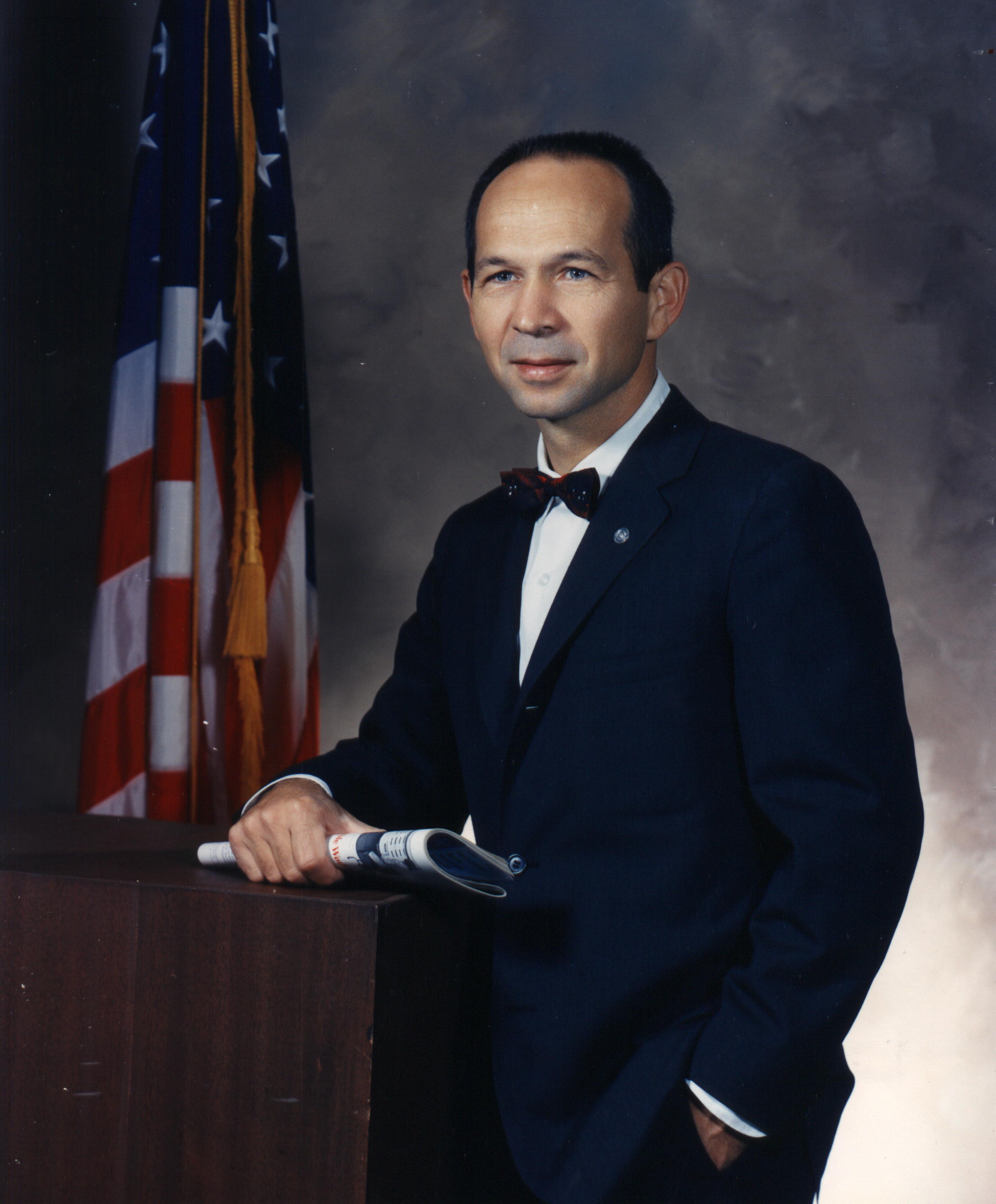1987 NATIONAL SPACE TROPHY RECIPIENT
Dr. Maxime A. Faget

Dr. Maxime Faget
(NASA photo, 1964)
Profile as published in the March 12, 1987 program book. Author unknown.
Dr. Maxime A. Faget, with his leadership and engineering genius, is highly responsible for the success of the United States space program. During his thirty-five year career with the National Aeronautics and Space Administration, he made many distinguished contributions to the advancement of aeronautics and astronautics. Internationally known a the chief designer of the Mercury spacecraft, he played a major role in developing the basic ideas and original design concepts that have been incorporated into every manned spacecraft the United States has flown. From his early research in supersonic flight testing through his leadership in the design and development of the Space Shuttle, Dr. Faget's engineering genius has been evident in the development of aircraft, missile, and spacecraft research and design techniques.
Dr. Faget was born in British Honduras where his father was a member of the United States Foreign Service. After graduating from Louisiana State University with a Bachelor of Science degree, he joined the U.S. Navy and served as an officer in the submarine service during World War II.
After the war, Dr. Faget joined the National Advisory Committee for Aeronautics, the predecessor to NASA. While at the Langley Aeronautical Laboratory, he made major contributions to the design and development of ramjet flight vehicles, air breathing engines, aircraft performance analyses, fuel control systems, and ground testing techniques. While working at Wallops Island, Virginia, Dr. Faget and his associates devised many specialized techniques that allowed them to accomplish transonic aerodynamic research that was nonexistent anywhere in the world. They provided information for the design of the X-1, which, in 1947 became the first manned airplane to break the sound barrier.
As a pioneer in the research field, Dr. Faget became an expert on vehicles suitable for reentering the Earth's atmosphere. He presented a paper which put forward most the key items that were to be used in conducting the Mercury Project.
Dr. Faget was one of the original 35 members selected to form the Space Task Group which later became the NASA Manned Spacecraft Center, now the Johnson Space Center. He participated in the development of every basic engineering system incorporated into the Project Mercury spacecraft. From the beginning of the Apollo Program, Dr. Faget was directly involved in the design and development of the spacecraft and its onboard systems. His leadership of a special design team conducting a feasibility study of a completely reusable spacecraft led to formal authority to develop the Space Shuttle.
As Director of Engineering and Development for NASA, Dr. Faget displayed outstanding leadership in executing the overall planning and integration of a highly complex, sophisticated combination of engineering disciplines. His design of a vehicle for man's transportation into space enabled the United States to concentrate on an accelerated program for manned space flight.
Upon his retirement from NASA in 1981, Dr. Faget became the Vice President for New Systems Development for Eagle Engineering, Inc.
